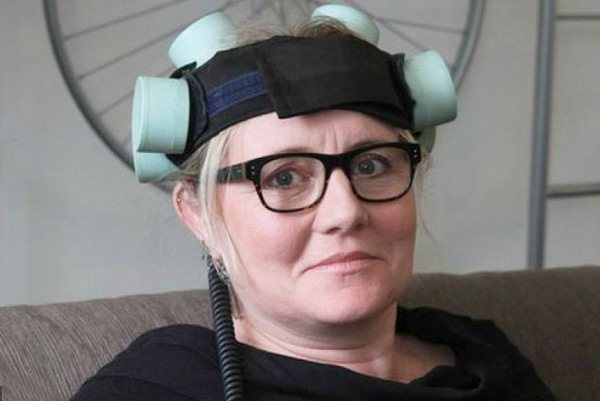 Lightly stimulating the brain with electricity may improve short-term memory in people with schizophrenia, according to a new study by researchers at the Johns Hopkins University School of Medicine.
Lightly stimulating the brain with electricity may improve short-term memory in people with schizophrenia, according to a new study by researchers at the Johns Hopkins University School of Medicine.
The procedure, known as transcranial direct current stimulation, involves placing sponge-covered electrodes on the head and passing a weak electrical current between them. It is widely regarded as safe, and the procedure is being studied as a treatment for depression and Alzheimer’s-related memory loss, and to enhance recovery following strokes. David Schretlen, Ph.D., a professor of psychiatry and behavioral sciences at the Johns Hopkins University School of Medicine, reasoned that this type of brain stimulation might ease some of the cognitive difficulties that afflict people with schizophrenia.
“Cognitive impairment is as ubiquitous as hallucinations in schizophrenia, yet medications only treat the hallucinations. So even with medication, affected individuals often remain very disabled,” Schretlen says. His hope is that transcranial direct current stimulation could give people with schizophrenia a shot at leading a more normal life.
To test that possibility, Schretlen and five Johns Hopkins colleagues targeted a brain region called the left dorsolateral prefrontal cortex, which plays an important role in short-term or working memory and is abnormal in people with schizophrenia. Interestingly, parents, siblings and children of people with schizophrenia show some of the same abnormalities to a lesser degree.
Schretlen recruited 11 participants: five adults with confirmed schizophrenia and six of their close relatives. Each participant received two 30-minute treatments — one using a negative electrical charge, which the researchers thought might prove beneficial — and the other using a positive charge as a control. During and after each treatment, participants completed a battery of cognitive tests. On tests of verbal and visual working memory, participants performed significantly better after receiving a negative charge, and the effects were “surprisingly strong,” says Schretlen.
Schretlen also tested participants’ verbal fluency, or word retrieval, during the treatment. People with schizophrenia often struggle to find the right words, Schretlen explains. Because the prefrontal cortex contains a brain region responsible for word retrieval, Schretlen thought transcranial direct current stimulation might help. To test that theory, he gave participants a minute to list things they could buy in a supermarket. Most people taking the test rattle off items in categories, naming fruits, then vegetables, then dairy products, for example. Schretlen found that while participants did not rattle off more words, they did better at the challenging task of switching between categories after a negatively charged treatment.
The stimulation “was associated with better performance on working memory and subtle changes in word retrieval,” Schretlen says.
Schretlen is now studying transcranial direct current stimulation in a larger sample of patients using repeated sessions of stimulation, which he hopes will induce lasting benefits.
“What’s nice about transcranial direct current stimulation is that it’s so benign. There are no bad side effects,” Schretlen says. “If it enables people with schizophrenia to think more clearly, it would make a huge contribution to the treatment of this devastating illness.”
A paper describing the study was co-authored by J. Jason van Steenburgh, Ph.D.; Mark Varvaris, B.A.; Tracy D. Vannorsdall, Ph.D.; Megan A. Andrejczuk, M.S.; and Barry Gordon, M.D., Ph.D. It was published online in Clinical Schizophrenia and Related Psychoses. The study done by Johns Hopkins Medicine.